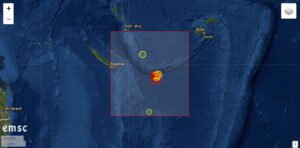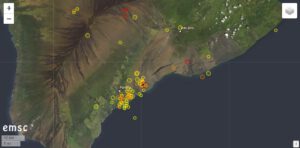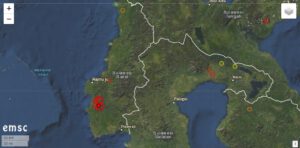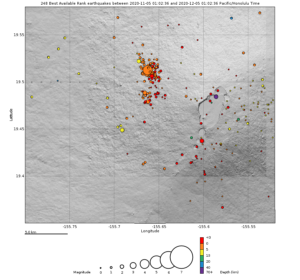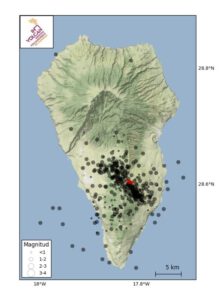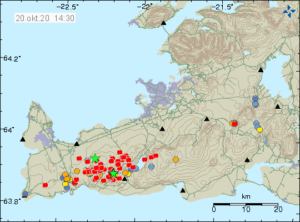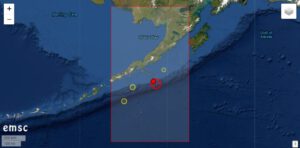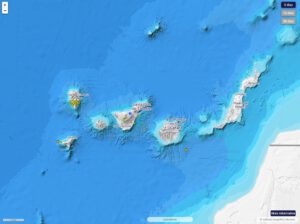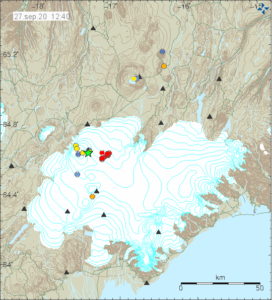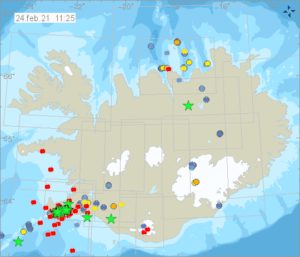 This morning Iceland was shaken by a strong earthquake of magnitude 5.7. The hypocenter was located at a depth of only 1.1 km, according to IMO. The epicenter was located on the Reykjanes Peninsula, more precisely, 3.3 km south-south-west of Keilir. This is a mountain of volcanic hyaloclasti. These are fragments of volcanic glass. Keilir is located about 10 km northeast of Grindavik and thus in the area that has been hit by inflation-related earthquakes since the beginning of last year. However, the magnitude of the current main earthquake suggests that the origin was tectonic in nature. However, it could be that the ground deformation triggered by inflation caused stresses and thus a fault zone was activated. But this is so far only speculation on my part. Therefore, I am eagerly awaiting a report from IMO to assess the situation.
This morning Iceland was shaken by a strong earthquake of magnitude 5.7. The hypocenter was located at a depth of only 1.1 km, according to IMO. The epicenter was located on the Reykjanes Peninsula, more precisely, 3.3 km south-south-west of Keilir. This is a mountain of volcanic hyaloclasti. These are fragments of volcanic glass. Keilir is located about 10 km northeast of Grindavik and thus in the area that has been hit by inflation-related earthquakes since the beginning of last year. However, the magnitude of the current main earthquake suggests that the origin was tectonic in nature. However, it could be that the ground deformation triggered by inflation caused stresses and thus a fault zone was activated. But this is so far only speculation on my part. Therefore, I am eagerly awaiting a report from IMO to assess the situation.
There were numerous pre- and aftershocks. Among the aftershocks, there were 34 tremors with magnitudes greater than 3. IMO has so far registered a total of 378 tremors in the affected region within 48 hours.
The earthquake occurred at 10:05 UCT. It was felt in a wide radius. There are no reports of damage yet.
